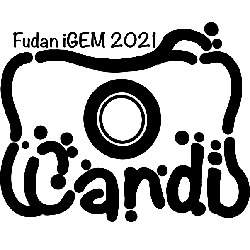Part:BBa_K3790085
T7 phage gene product 2, an E.coli transcription inhibitor
Introduction
In order to turn the host bacteria into ‘factories’ that concentrate on manufacturing parts of the virus, some phages have the ability to shut off the endogenous transcription of host bacteria. As for T7 phage, there are three gene products collaboratively realizing the function, which are gene product (gp) 0.7, gp2 and gp5.7[1].
Gp2 is an early phage gene, which means they are transcribed by the host's RNA polymerase at the very beginning of the infection process[2].
Usage and Biology
Gp2 is a small protein that can bind to both the 1.1 domain of σ70 factor and the β’ subunit of the host's RNAP[3], results in effective inhibiting of the transcription initiated by σ70-RNAP complex.
Experimental Results
Gp2 was eliminated by us because gp5.7 is a better choice. For more details, please visit: https://parts.igem.org/wiki/index.php?title=Part:BBa_K3790050

The length of albA1 DNA was 288 bp, which is approximately 300 bp after adding homology arms to both ends for PCR cloning. We isolated the DNA of interest by gel extraction for subsequent reactions.

Reference
- ↑ T7 phage factor required for managing RpoS in Escherichia coli. Tabib-Salazar A, Liu B, Barker D, Burchell L, Qimron U, Matthews SJ, Wigneshweraraj S. Proc Natl Acad Sci U S A, 2018 Jun 5;115(23):E5353-E5362. PMID:29789383
- ↑ Roles of the early genes of bacteriophage T7 in shutoff of host macromolecular synthesis. McAllister WT, Barrett CL. J Virol, 1977 Sep;23(3):543-53. PMID:330878
- ↑ Structural and mechanistic basis for the inhibition of Escherichia coli RNA polymerase by T7 Gp2. James E, Liu M, Sheppard C, Mekler V, Cámara B, Liu B, Simpson P, Cota E, Severinov K, Matthews S, Wigneshweraraj S. Mol Cell, 2012 Sep 14;47(5):755-66. PMID:22819324
Sequence and Features
- 10COMPATIBLE WITH RFC[10]
- 12COMPATIBLE WITH RFC[12]
- 21COMPATIBLE WITH RFC[21]
- 23COMPATIBLE WITH RFC[23]
- 25COMPATIBLE WITH RFC[25]
- 1000COMPATIBLE WITH RFC[1000]
| None |

